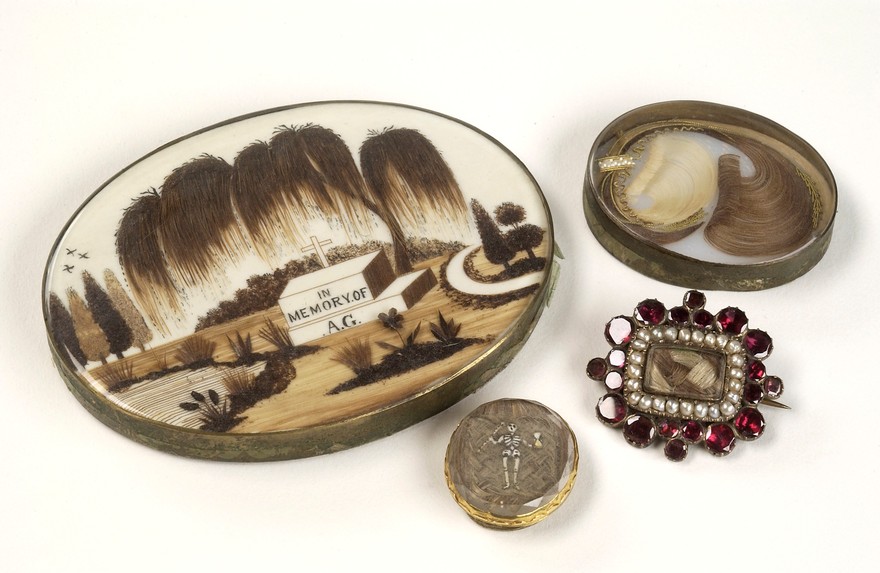In times before modern medicine and the introduction of health and safety legislation, it was common for people to die young, and to die suddenly and unexpectedly. Since the beginning of human history, people have followed a huge variety of grieving rituals in order to mourn the dead. However, the Victorians famously made something of an art of mourning, turning it into a conspicuous public display.
Love Never Dies
Queen Victoria started the trend when Prince Albert died in 1861, and Victoria famously spent the next 50 years in mourning. She withdrew from public life, wore only black for the rest of her life, and continued to have her husband’s linens and towels changed daily. Following her example, it became commonplace for families to hold elaborate rituals to mark the passing of their loved ones. There were strict etiquette rules to follow, with specific dress codes and different periods of mourning ascribed to one’s relation to the deceased. Widows were expected to remain in mourning for two years, while the mourning period for the death of a child was six months. This was supposed to reflect the accepted natural grieving period, and to break from these customs was viewed as the ultimate desecration of the memory of the dead.
Memento Mori
Another custom that is attributed to Queen Victoria was the practice of taking hair from the deceased and having it fashioned into jewellery. After Prince Albert’s death, Victoria carried a lock of his hair with her at all times. Rings, brooches and necklaces were all common memento items, and were often inscribed with the person’s name, and their date and place of death. Sentimental pieces like this were often passed down through families, or else were buried with the mourner when they themselves died. Sometimes, more elaborate pieces would be commissioned and entire shrines were created dedicated to the person’s memory. More unusually, the body might actually be preserved and kept on display, though this was very rare and only an option for very wealthy families.

Post-Mortem Photography
As new photographic techniques developed, photo portraits became very popular as photography became cheaper and more accessible. It became a popular practice to have a photograph taken of people after they had died as a memento, especially in the case of babies and young children. Sometimes the eyes and cheeks would be coloured to give a more lifelike appearance, or else would be posed as if sleeping. However, the practice may not have been as widespread as commonly thought, as many photographs purporting to show a deceased person often show living subjects who are using a posing frame, or just have a slightly odd facial expression!
Mass Mourning
Such elaborate public mourning rituals fell out of fashion after the First World War. With loss on such an unprecedented scale, the desire to move on from the horror and loss of the war during the 1920s meant that long term grieving that the Victorians had performed seemed both outdated and excessive. Today, mourning is seen as a much more private and personal affair, though many religions and cultures continue to follow specific practices to honour and remember the dead.
Sources and Further Reading